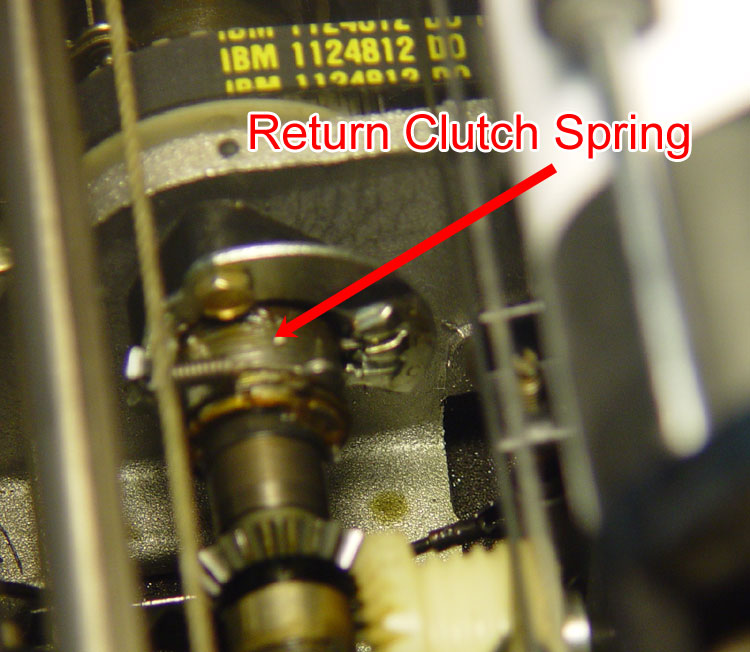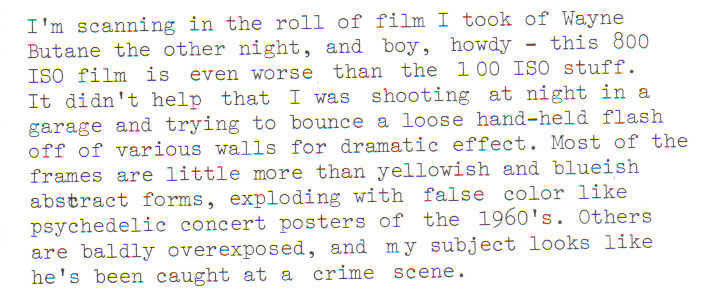
Oh, Ton S. challenged us to show off our office staplers, so here’s mine. The Press Room’s stapler is powered by a Dayton motor, no relation to Dayton Typewriters

You push the foot pedal to make it staple. Builds it’s own staples in whatever length it needs out of wire from a spool. You do NOT want to get your finger under there.























A saddle stitcher is just plain cheating! Impressive though :-)
Impressed by the Hornet “Ibeemer”. Those are still quite wide, aren’t they? Is there such a thing as a Selectric II that’s the same size as a Selectric I?
The “Personal Selectric” is the same size as the 11″ Selectric I. I think if you cut a space for the correction key in the SI shell, it would fit the Personal Selectric.
I didn’t think to ask for uncut negs. I may have to see if they’ll do that for me here.
Yeah, I think I got lucky at my local Walgreens. The counter guy I keep running into seems very knowledgeable and seems to be the guy actually running the machine. When I ask him for the bare minimum developing, he pulls out his phone and calculates the price right there, presumably taking off the cost for prints and cutting. The price is different every time, but it keeps getting lower :D
The Green Hornet looks great in his new duds. One of these days, when my arm is back in bass-playing shape, we should get together and jam.
Ted, the part you are pointing to is the Torque Limiter Clutch. The smaller spring that is usually stretched or missing is the Torque Limiter Extension Spring. The purpose of this clutch is to prevent damage to the machine if something should jam the print or operational mechanism. Without the Extension Spring, the Torque Limiter Clutch slips at a much lower torque and a Carriage Return operation usually will fail because the clutch slips prematurely.
The Personal Selectrics I’ve seen were all pretty clean and the mechanisms not worn very much. I guess that’s because they were sold for personal, not business use and they didn’t see the day-after-day use that business machines did. They were just as rugged as the bigger models though, so with proper care they would probably last a lifetime.
Clark
ahh, yep – I didn’t look up the part name and just made one up. I just think of it as “the first place I look when I get a Selectric that has carriage return issues” :D
Yeah, I really like the Personal Selectric. It is in remarkably good shape, and the foam removal wasn’t quite as awful as older Selectrics. I did note that there are dummy cuts in the inside of the shell on the rear left in the positions that the pitch select and “copies” selection levers would be, if it had them. It made me wonder if there possibly were dual-pitch Personal Selectrics manufactured.
My guess is the cover was made with mold patterns from Selectric II’s, just narrower and the extra holes were just blocked off. I suppose it’s possible that more variants were planned, but since the Personal Selectric was only manufactured for one year in 1983, only the 12-pitch model was ever released. The Wheelwriter series debuted in 1984, overshadowing previous mechanical machines like the Personal Selectric. Rumor has it that IBM made the Personal Selectric only to use up the large inventory of spare parts it had in preparation for discontinuing mechanical typewriters.
ahh, so they were only manufactured in ’83? The case datestamp on mine is ’82 – I’ll need to change the date on my listing. :D
IBM says it was introduced in 1982, probably late in the year. They were produced most of 1983 I think, then discontinued before 1984. The one I had was date stamped on the left side frame of the keyboard in ink.